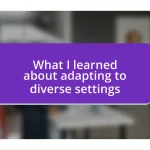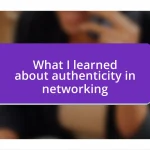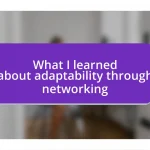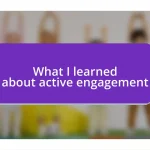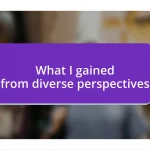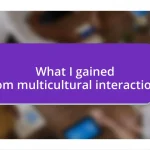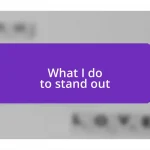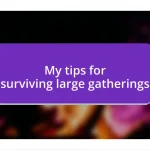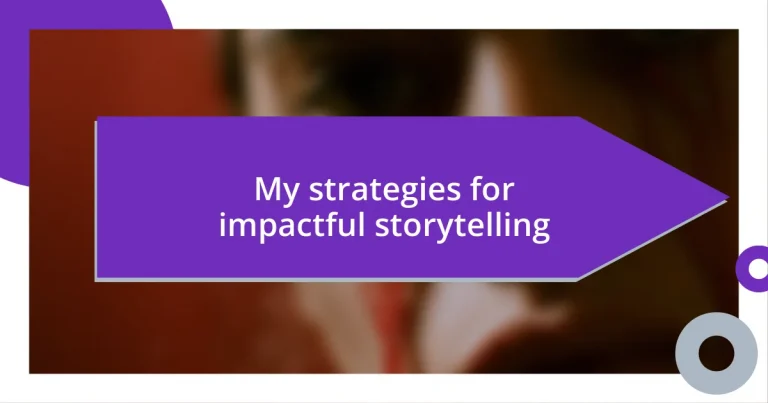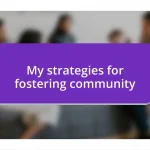Key takeaways:
- Storytelling creates deep connections through shared human experiences and emotional engagement.
- Effective storytelling requires a clear structure (hook, context/conflict, resolution) and the use of sensory details to evoke emotions.
- Crafting relatable characters with flaws and distinct traits enhances audience empathy and connection with the narrative.
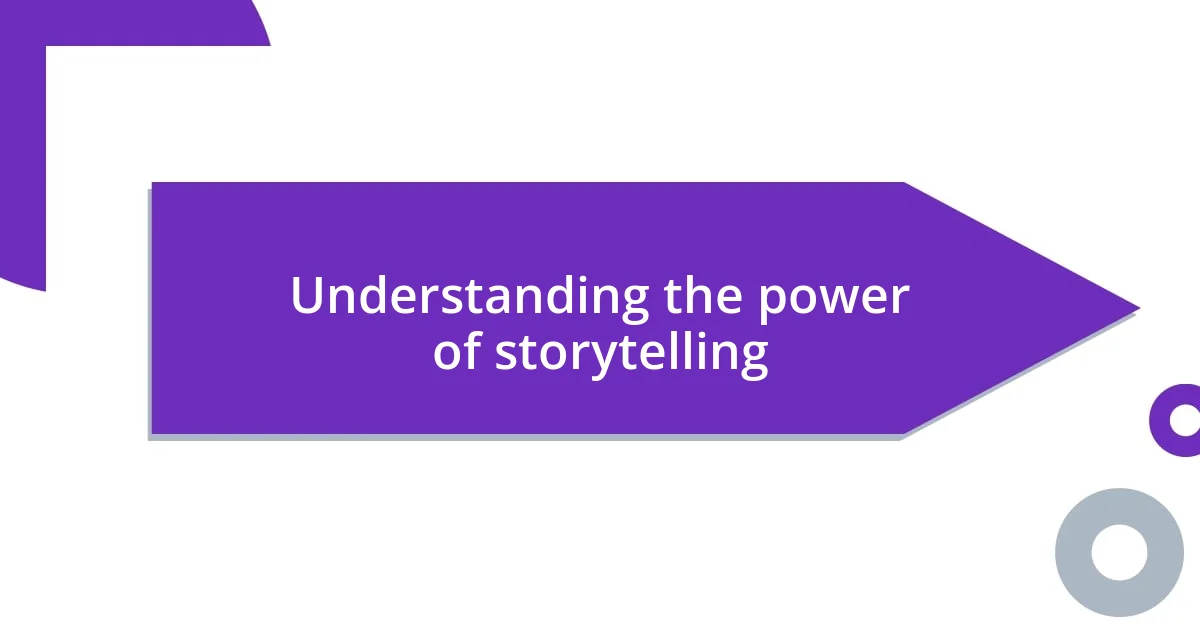
Understanding the power of storytelling
Storytelling wields incredible power because it taps into our shared human experience. I remember listening to a simple tale during a community gathering — the storyteller painted vivid images with words, making everyone feel a part of the journey. Isn’t it fascinating how a few carefully chosen phrases can resonate so deeply, evoking laughter or even tears?
When I think about it, stories have a unique ability to create connections. Have you ever noticed how a well-told story can make you feel understood or inspire you to see things from a new perspective? I find that whether it’s in casual conversations or during more serious presentations, incorporating a personal narrative often transforms the atmosphere, drawing people in and changing how they perceive the message.
The emotional engagement that comes from storytelling is unmatched. I once shared my experience of facing a significant challenge at work, and it sparked an unexpected discussion among colleagues who had faced similar issues. This shared vulnerability not only strengthened our bonds but also created a supportive environment. Isn’t that the essence of storytelling? It gives us a platform to connect, reflect, and understand one another on a deeper level.
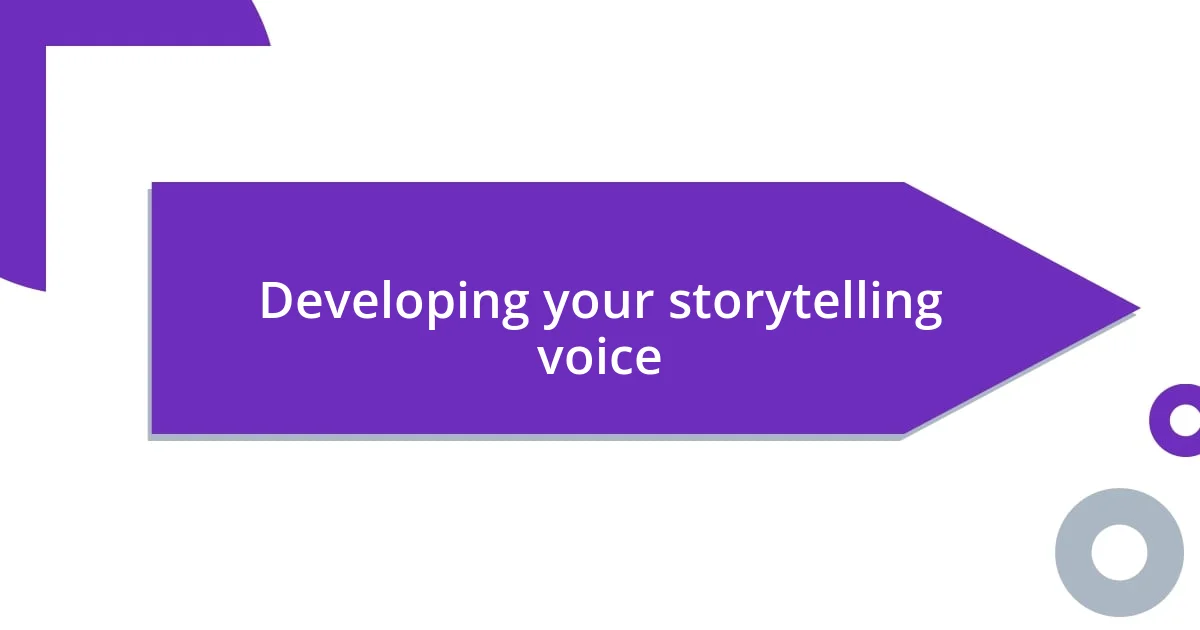
Developing your storytelling voice
Finding your storytelling voice is a journey that requires introspection and authenticity. I remember a time when I struggled to convey my ideas effectively. It wasn’t until I embraced my quirks and unique perspective that I began to see a shift. My stories became reflections of who I truly am, and rather than aiming for what I thought others would like, I focused on what felt genuine to me. This authenticity is what ultimately creates a connection with the audience.
To cultivate your storytelling voice, consider these key strategies:
- Identify your passion: What topics ignite a spark in you? Let this passion guide your narratives.
- Be vulnerable: Share your challenges and triumphs. It’s in these moments of honesty that true connections form.
- Experiment with style: Play with different tones or formats. Whether it’s humor, drama, or a simple conversational flow, find what resonates.
- Practice regularly: The more you tell stories, the more your voice can evolve and strengthen.
- Seek feedback: Listen to your audience’s reactions. Their insights can help refine your voice further.
Ultimately, developing your storytelling voice is about embracing your unique journey and sharing it with confidence.
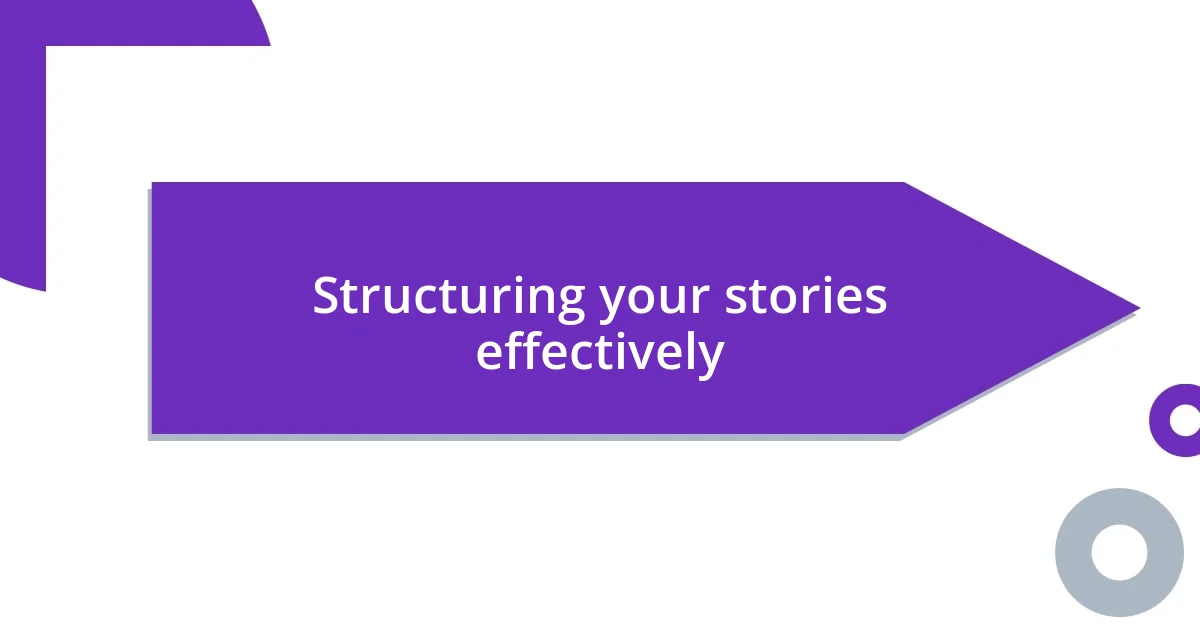
Structuring your stories effectively
Structuring your stories effectively can transform a simple narrative into a compelling experience. I once attended a workshop where the facilitator emphasized the importance of a clear beginning, middle, and end. It clicked for me — stories need this structure to guide the audience through the journey, ensuring they remain engaged.
A great strategy I’ve learned is to use a hook that grabs attention immediately. For instance, starting with a question or a bold statement can ignite curiosity. I remember once launching into a story with the line, “What if you only had one month to live?” It instantly sparked interest. Following that, providing context in the middle helps to deepen understanding, and finally, concluding with a resolution or a powerful takeaway ties everything together beautifully.
To illustrate the different elements of story structure clearly, I find that comparing various components can be incredibly helpful. Here’s a quick table that encapsulates these ideas:
| Story Element | Description |
|---|---|
| Hook | Grabs attention and introduces the theme |
| Context/Conflict | Deepens the narrative and provides challenges to overcome |
| Resolution | Brings closure and leaves the audience with a message |
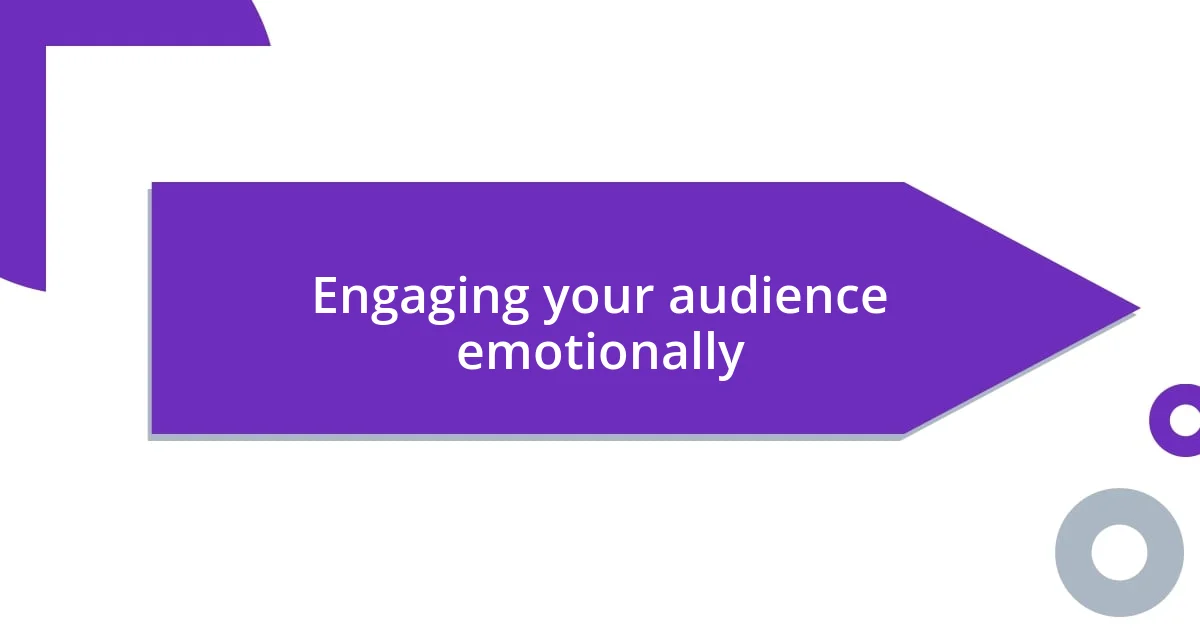
Engaging your audience emotionally
Engaging your audience emotionally starts with tapping into shared experiences. I recall sharing a story about a difficult decision I had to make, and I watched as people nodded along. It was as if we were all momentarily connected through that common thread, reminding me that vulnerability in storytelling can evoke powerful emotions.
In my journey, I’ve discovered that employing sensory details brings stories to life. When I described the smell of freshly baked cookies or the sound of laughter echoing in the air, I noticed audience members smiling or even reminiscing about their own memories. Isn’t it fascinating how these small elements can transport people back to their own experiences? It highlights the emotional resonance that vivid imagery can create in storytelling.
Moreover, inviting your audience to reflect on their feelings enhances engagement. I often ask, “Have you ever felt that rush of joy or the sting of sorrow?” This simple question opens the door for my listeners to engage on a deeper level. It’s this interaction that makes storytelling an intimate experience, transforming the narrative not just into a story but into a shared emotional journey.
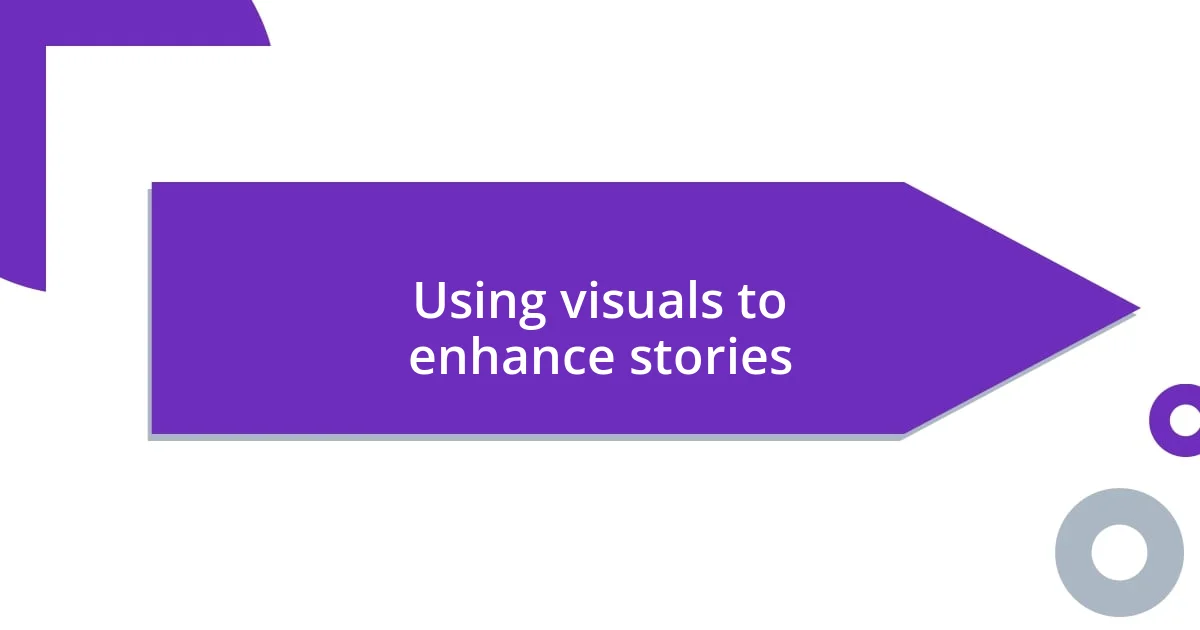
Using visuals to enhance stories
Using visuals in storytelling can profoundly impact how an audience connects with a narrative. I remember presenting a project where I incorporated infographics to represent data visually. As I explained the points, the audience’s eyes followed the graphics, and I could feel their engagement levels soar. It struck me then how a well-placed visual can not only clarify complex ideas but also evoke emotions that words alone may struggle to convey.
Photos and videos can create an emotional backdrop that resonates with viewers. For instance, during a storytelling event, I shared images from my travels. One photo of a sunset over an ocean stirred memories and feelings in the audience. I could see glimmers of nostalgia in their eyes. Isn’t it amazing how a single image can evoke a rush of memories and emotions, making the story feel more personal and relatable?
Animations and graphics can also add dynamism to a story, enhancing the overall experience. I used a short animation once to illustrate a concept, and the laughter that erupted in the room was unforgettable. It made me realize that visuals can add a layer of humor and surprise to storytelling. How often do we retain information better when it’s paired with engaging visuals? I believe this combination definitely strengthens the connection between the story and its audience, transforming understanding into a visual journey that lingers.
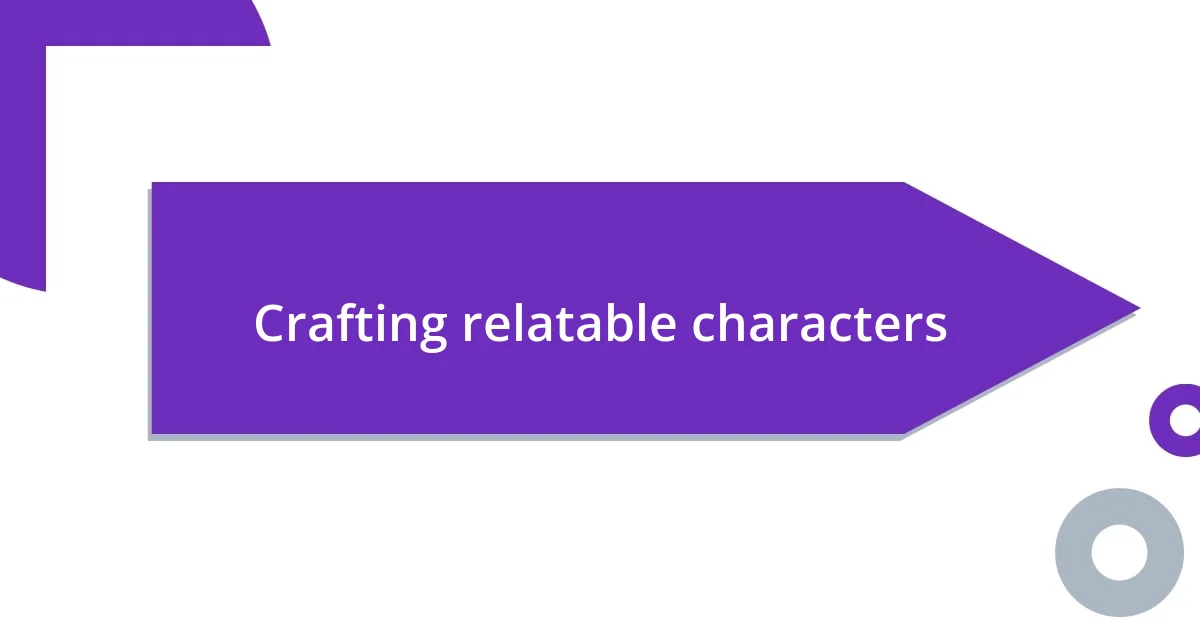
Crafting relatable characters
When I think about crafting relatable characters, I inevitably reflect on the importance of making them flawed yet endearing. In one of my stories, I portrayed a character wrestling with self-doubt while chasing a dream. I remember sharing this at a gathering, and it was heartening to see people nodding in recognition. Isn’t it interesting how a character’s struggles can mirror our own, inviting us to empathize deeply?
Another key aspect is ensuring that characters have distinct traits that resonate with what we’ve encountered in real life. I once created a quirky neighbor character who infused humor into mundane situations. The laughter that erupted when I revealed their zany habits was a moment of connection that can’t be replicated. How often do we all yearn for a bit of eccentricity in our lives, reflected in the characters we meet?
Finally, the way a character relates to their environment can significantly enhance relatability. I vividly remember describing a scene where my protagonist gazes at a family photo, feeling a tug of nostalgia. The audience shared an immediate bond, as reflections of their own stories surfaced. Isn’t it beautiful how a character’s moment of introspection can draw us into their world, revealing our shared human experiences?
